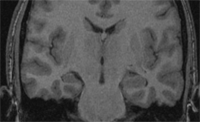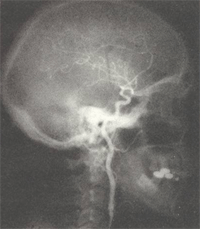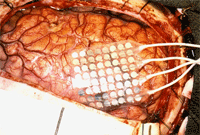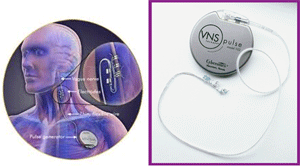EARLY CLOSURE MARCH 4 - Due to the forecast for severe winter weather, Creighton's Omaha campus will close at 7 P.M. this evening.
All in-person classes, clinics, and events, regardless of start time, are asked to end by 7 P.M. For those needing a shuttle, please visit my.creighton.edu for the most up-to-date maps and schedule. Shuttles will run until 8 P.M. this evening. We encourage you to be mindful of other closures or impacted services across the city as well.
Employees, including those classified as responsible for “essential operations” should review Creighton's Weather and Emergency-Related Absence Policy and work with your immediate supervisor on expectations for job functions during this curtailment of campus operations.
Please take proper winter weather precautions throughout the day and contact public safety at 402.280.2911 for any emergencies.

Creighton Epilepsy Center
The Creighton Epilepsy Center is led by Sanjay P. Singh, MD. Dr. Singh is an internationally renowned expert in epilepsy treatment. He has won international, national and regional awards for his professional achievements and his dedication to the care of patients with epilepsy. He is invited to lecture on epilepsy therapy at many prestigious medical centers around the world. He is currently the Chairman & Professor of the Department of Neurology at Creighton University School of Medicine.
• Over 3 million Americans have epilepsy.
• About 200,000 new cases are diagnosed annually in the United States.
• There are about 20,000 patients with epilepsy in Nebraska.
What is a seizure?
A seizure is an abnormal electrical discharge in the brain which leads to a change in behavior. It is like an electrical storm, which leads to different manifestations depending upon where this electrical storm occurs. If it happens in the motor control region of the brain you get motor activity, if it occurs in the sensory area then you can get numbness/tingling and if it occurs in the temporal lobe then the person can go into a blank stare.
What is Epilepsy?
Anyone who has two or more unprovoked seizures has Epilepsy. Epilepsy is a chronic seizure disorder.
There are 2 main types of seizures:
- Generalized – the electrical storm involves the whole brain.
- Partial – The electrical storm starts from a part of the brain.
Partial seizures are much more common than generalized seizures.
The treatments differ based on the type of seizure you have.
Tests:
Most patients with seizures require:
Image  | Image  |
| An MRI of the Brain (for structure) | An EEG (for electrical function) |
Those who do not respond to initial treatment require further work up as described below.
Treatments:
- The main treatment of Epilepsy is medications and almost 60% of patients respond to medications.
- If medications fail then epilepsy surgery becomes an option. Epilepsy surgery involves finding the area of the brain that is giving rise to seizures and making sure that this area is not responsible for any vital function. Then this seizure focus can be surgically removed.
- The last option is a vagal nerve stimulator, this is an FDA approved form of treatment for medically refractory epilepsy.
Creighton Epilepsy Protocol: 4 Phases
Phase 1
Phase I of the epilepsy treatment and monitoring program is the most critical. The Creighton Epilepsy Center offers all services needed for the treatment of medically refractory epilepsy, including:
Video-Electroencephalography (VEEG) monitoring
This test is performed as an inpatient. Its purpose is to determine what kind of seizures is the patient having and to establish the most optimal treatment strategy for that patient.
Magnetic Resonance Imaging (MRI) with a special seizure protocol to identify structural abnormalities of the brain.
Positron Emission Tomography (PET) scan to asses the metabolism of the brain. The malfunctioning area (seizure focus) of the brain doesn’t utilize glucose as well as the rest of the brain and thus can be easily identified.
Single Photon Emission Computed Tomography (SPECT) scan assesses the blood flow to the brain. The brain autoregulates its blood supply. The area of the brain that triggers seizures has a decreased blood flow when the patient is not having a seizure and an increased blood flow during a seizure.
Neuropsychological testing tests brain function by neuropsychological tests. It can take almost a full day to complete these tests.
Phase 2

This phase is only undertaken if a patient is a candidate for epilepsy surgery.
The Wada Test localizes a patient’s language and memory functions. First a cerebral angiogram is done to determine the circulation. A drug is then injected to “deaden” one hemisphere of the brain at a time and a standardized memory and language test is administered to determine the required information regarding language and memory.
Phase 3

This procedure is only performed in a select few where further localization is needed to clearly delineate the seizure onset area. It involves intracranial monitoring. During the procedure, a flap of the cranial bone is removed so that electrodes can be placed directly on the brain to localize the seizure onset area.
Phase 4
This phase involves the actual surgical procedure to remove the seizure focus.
Vagal Nerve Stimulation

Vagal nerve stimulation involves implanting a pacemaker into a patient’s chest. Leads are placed on the vagal nerve in the neck which sends frequent electrical impulses to the brain to alleviate seizures. The electrical impulses are adjusted with each patient to provide optimal success.


